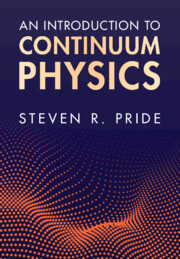Refine search
Actions for selected content:
2 results
7 - Nonequilibrium Diffusive Transport
- from Part I - Continuum Physics
-
- Book:
- An Introduction to Continuum Physics
- Published online:
- 06 February 2025
- Print publication:
- 13 February 2025, pp 393-456
-
- Chapter
- Export citation

An Introduction to Continuum Physics
-
- Published online:
- 06 February 2025
- Print publication:
- 13 February 2025
